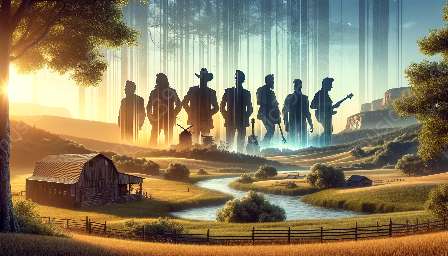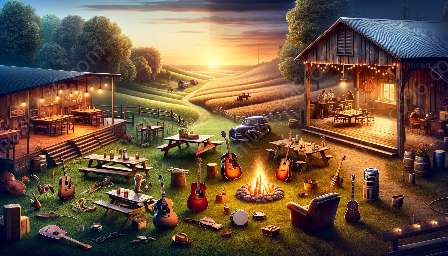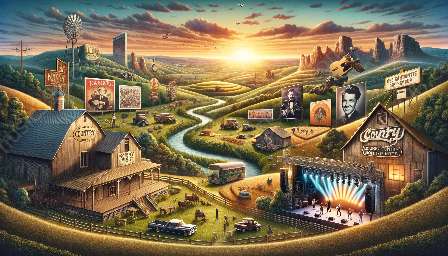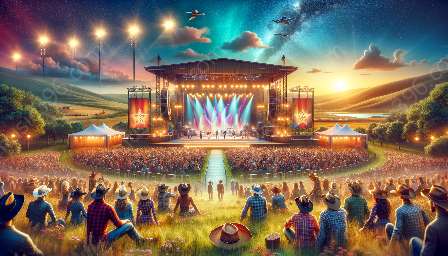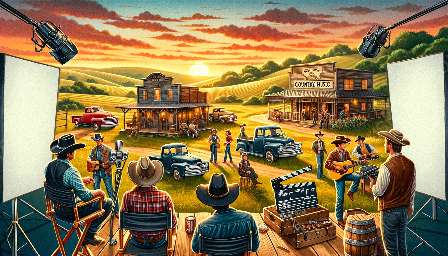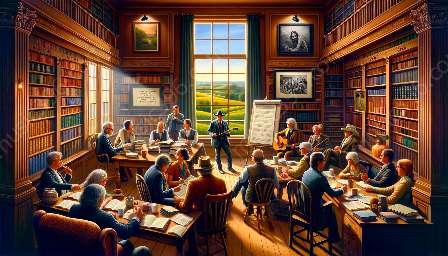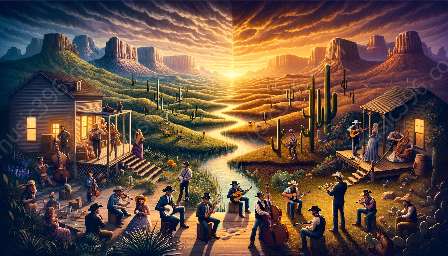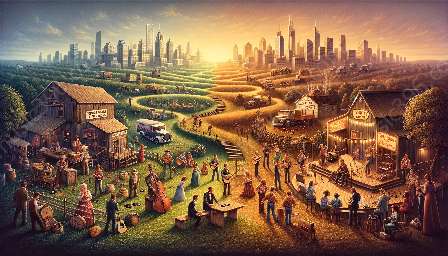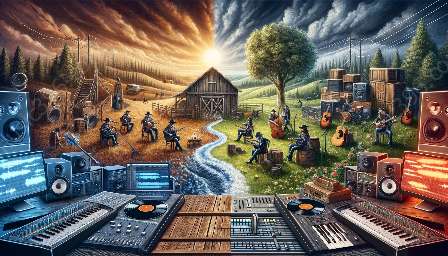Country music has deep-rooted connections with bluegrass and folk music, both of which have significantly influenced its evolution. This topic cluster delves into the historical, cultural, and musical aspects of these relationships and their impact on the chronology of country music.
Bluegrass Roots in Country Music
Bluegrass music, with its fast tempos and virtuosic instrumentals, has been an integral part of country music since its early days. Originating in the Appalachian region, bluegrass shared common roots with traditional country music, particularly in terms of storytelling and lyricism. The banjo, mandolin, fiddle, and guitar, which are commonly associated with bluegrass, also found their place in country music, enriching its sonic landscape.
Folk Music's Influence on Country Music
Folk music, characterized by its raw and heartfelt storytelling, has also played a significant role in shaping country music. The narrative-driven approach of folk songs resonated deeply with the essence of country music, leading to an interplay between the two genres. Artists such as Bob Dylan and Joan Baez bridge the gap between folk and country, demonstrating the interconnectedness of the two genres.
Defining Events in Country Music's Evolution
As country music progressed through the decades, its relationship with bluegrass and folk became more pronounced. The emergence of influential artists such as Bill Monroe, the 'Father of Bluegrass,' and the inclusion of folk-inspired songwriting techniques in country music’s mainstream paved the way for a rich and diverse musical landscape.
Key Collaborations and Cross-Pollination
Collaborations between country, bluegrass, and folk artists have been pivotal in shaping the trajectory of country music. The fusion of bluegrass instrumentals with traditional country melodies and the infusion of folk storytelling into country songwriting has led to genre-defying compositions that capture the spirit of American music.
Modern Interpretations and Revival
In the modern era, country music continues to draw inspiration from bluegrass and folk, with contemporary artists revisiting and reimagining these musical traditions. The revival of acoustic instrumentation and the resurgence of storytelling-driven lyrics highlight the enduring influence of bluegrass and folk on the country music landscape.
Conclusion
Country music's relationship with bluegrass and folk is a testament to the genre's adaptability and rich heritage. The intertwining of these musical styles has contributed to the multifaceted nature of country music, shaping its evolution and ensuring its enduring relevance in the realm of American music.


